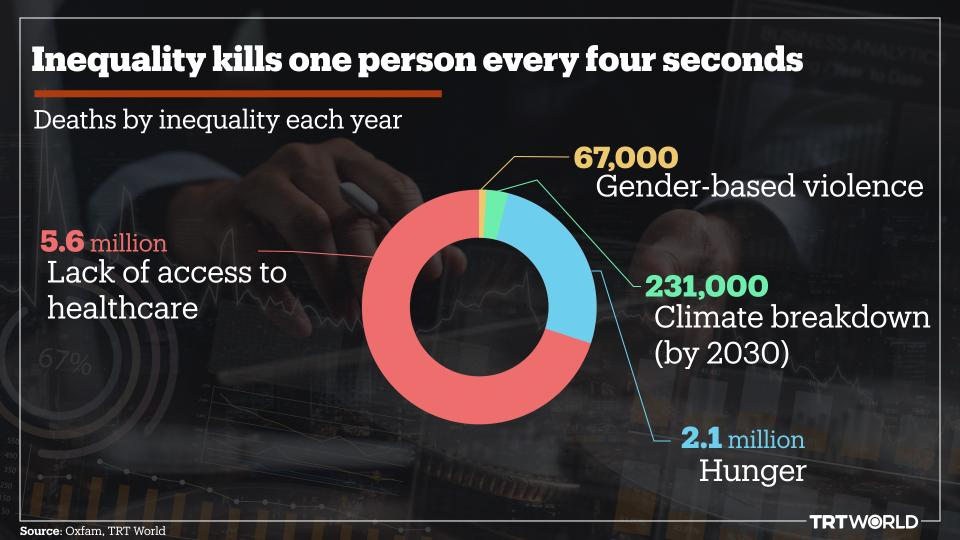Inequality Report
Figure 4: No Copyright Infringement Intended
Context:
- According to a recently released Oxfam Report, income of 84 percent of households in the country declined in 2021.
Finding of the Report:
Billionaires:
- India's billionaire rank increased from 102 to 142 amid the large income inequality exacerbated by the Covid pandemic.
- According to the report, India is the third largest number of billionaires in the world after China and the United States, with more billionaires than France, Sweden and Switzerland combined.
- India's billionaire numbers in 2021 have increased by 39%.
Wealth of the richest and lowest:
- In 2021, the total wealth of 100 of India's wealthiest people reached a record high of Rs 57.3 Lakh Crore ($ 775 billion).
- In the same year, the bottom 50 percent of the population accounted for only 6 percent of national wealth.
- During the pandemic (March 2020 to November 30, 2021), the wealth of Indian billionaires increased from Rs 23.14 million (US $ 313 billion) to Rs 53.16 million (US $ 719.0 billion).
- The report described inequality as economic violence, adding that lack of access to health care, gender-based violence, hunger and climate change kill 21,000 people each day.
Extreme poverty:
- Currently, it is estimated that more than 4.6 million Indians will be in extreme poverty in 2020.
Health budget:
- India's health budget recorded a 10% decline from the 2020 RE (revised estimate)21.
Education budget:
- Funding for education has been reduced by 6%.
Social security budget:
- Budget allocation to the social security system has dropped from 1.5% of the Union's total budget to 0.6%, almost half of the world's new poor.
Gender parity:
- Women lost a total of Rs 59.11 billion (US $ 800 billion) in income in 2020, and women's employment today is Rs 1.3 billion less than in 2019.
- Correcting this obscene inequality error is more important than ever by targeting extreme wealth through taxation and returning that money to the real economy to save lives.
Taxation:
- The increase in indirect taxes on federal revenues continued for four years, but the share of corporate taxes declined.
- The additional tax on fuel is up 33% year-on-year in the first six months of 2020-21 and 79% higher than before Covid.
- At the same time, the wealth tax "for the ultra-rich" was abolished in 2016.
Out-of-pocket costs:
- According to data from the National Sample Survey (NSS) (201718), the out-of-pocket cost (OOPE) of private hospitals is about 6 times that of inpatient treatment in public hospitals and 2 to 3 times that of outpatient treatment.
- India's average OOPE is 62.67 percent, while the world average is 18.12 percent.
Federal structure:
- Despite the federal structure of the country, the revenue structure maintained control of resources in the hands of the center, and the pandemic management was still left to the state-lack of financial or human resources to do so.
Way Forward:
- A 99% one off windfall tax on the wealth gains of the 10 wealthiest men in Covid19 alone will generate $ 812 billion.
- These resources produce sufficient vaccines worldwide and bridge the funding gap in climate change control, universal health insurance and social protection, and efforts to combat gender-based violence in more than 80 countries.
- The world can create an economy in which no one can live in poverty or with the wealth of unimaginable millionaires.




1.png)
